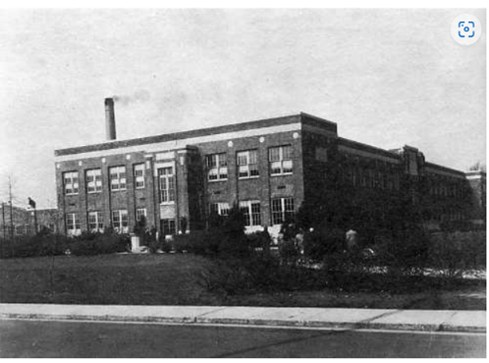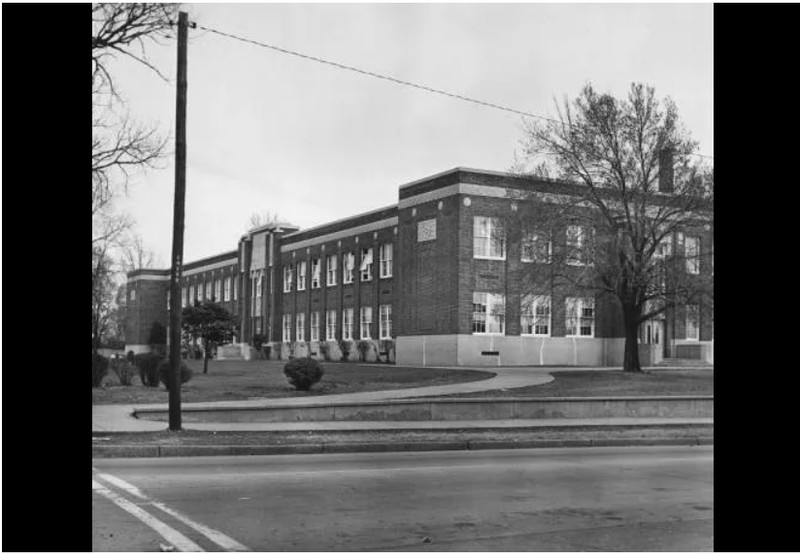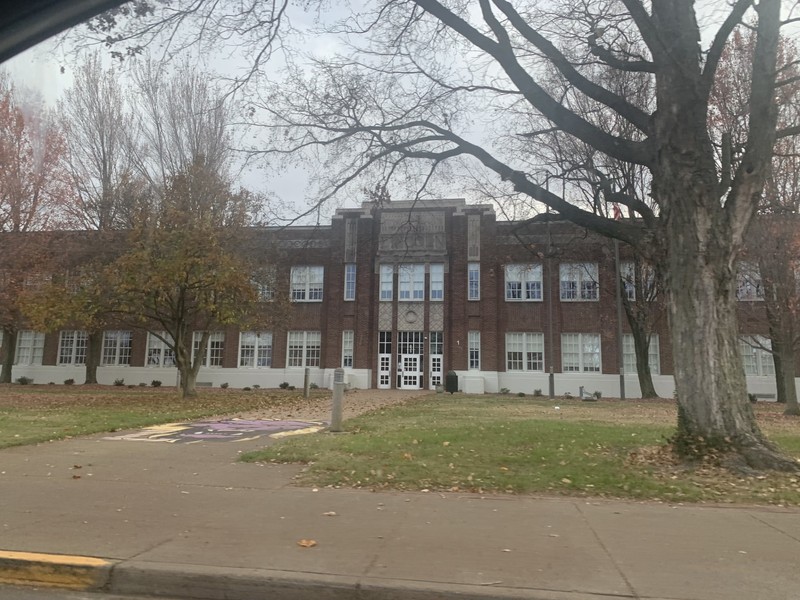Lincoln School (located at 635 Lincoln Ave):
Introduction
Text-to-speech Audio
PSA: Lincoln School's actual location is 635 Lincoln Ave.- Someone in HIST 288 had already created an entry for Lincoln causing me to have to use another address. But the school and what you should be facing is located at 635 Lincoln Ave NOT 634 Lincoln Ave.
The third African American high school in Indiana, Lincoln High School, was the first and only high school for African Americans within the surrounding counties in 1928. It opened in September of 1928 and served only African American students until 1962, when the last all-black American class graduated. Also, in 1962, the school became K-8 and the high school students began integrating into other local high schools. In 1985, the school changed once more into an elementary school, which it remained as until 2010 when it became a k-8 school once again. Currently, Lincoln School is still in session, hosting K-8 classes and holds many during and after-school programs.
Images
Lincoln School pictured in 1934

Lincoln School pictured in the Newspaper in 1962

Lincoln School pictured on November 14 2023

Backstory and Context
Text-to-speech Audio
In 1925, the county school board began planning for a new school. In that same decade, Evansville’s Ku Klux Klan had been elected to the governor’s office, winning more than half the seats in the Indiana legislature. They promoted policies supporting segregation. The depleted and segregated Fredrick-Douglass High School, located in Evansville, was determined to be replaced by Lincoln School and was said to be K-12. The city officials, who were mainly Klan members decided the building should be placed on Lincoln Ave., which was the Governor Street School Playground at the time. Its original thought of placement was to be in Oakdale, but the Klan felt there were so many African Americans in the inner city that the school would do best in Bapttistown, and used their influence on the board to ensure that happened.
It started construction in 1927 to become a new institution for African American children in the tri-state area. It costed roughly 278,000 dollars to build. The city replaced the "Fredrick-Douglass" name with "Lincoln" because Frederick Douglass was an abolitionist and had a white wife, so the city didn’t feel comfortable having the school named after him.
Construction of the building was completed in August of 1928 and opened the same year. It was the third African American high school in Indiana at the time. Since it was the only African American high school in the area, students from Mt. Vernon, Rockport, Grandview, and Newburgh all bussed to the one high school that would be open to them for miles. During its first year, the school’s librarian, Alberta K. Mcfarland-Stevenson, went door to door collecting books and money donations. Mrs. Alberta did this because the city board refused to allocate money for books in the library. The first principal of the school was Dr. William E. Best, who served as the school's principal from 1928 to 1951.
Lincoln had support from the Baptisttown community and quickly became known by the Evansville Argus as "one of the nation's finest race high schools." Many of the schools’ students and teachers lived close by the school and maintained a close relationship with each other. Since most places in Evansville were segregated and not allowing of African American gatherings, sports became common ground the community bonded over. The community took great pride in the Lincoln Lions teams and helped African Americans on the team gain confidence on and off the court.
In 1949, state law opened all schools to African Americans, but a lot of students stayed at Lincoln due to its close proximity to Lincoln Gardens, which housed the majority of African Americans in the city. In 1951, Dr. Charles Rochelle, who was the school’s current social studies teacher, replaced Dr. William E. Best as the school’s principal. In 1956, the Lincoln Lions became the city’s first team to have an undefeated basketball season and won the school's first sectional championship. Thanksgiving became a prominent day for the school’s football team, who would typically face out-of-state teams. Over 2,000 people gathered for the event, and was a day of community bonding for the city.
The school’s last all-black graduating class graduated in 1962. The same year, Lincoln was turned into a K-8 school. Also, in 1962, Dr. Rochelle retired and was replaced by Dr. Alfred D. Wiley. The school slowly began integration. To help with integration, students were bussed to other schools, and programs were put into place like after school-teams and clubs, title 1 scouting, and business partnerships. The school went through multiple principals in the coming years. In 1972, leadership shifted to Dr. Anthony Brooks, who was replaced by Mr. Paul Farmer in 1974. Leadership changed again in 1978 under Ms. Sandra Altheide. Under the new leadership of Mr. Ronald Talley in 1985, the school switched to serving only elementary students in the area.
In 1996, the new principal, Rosemary Summers, had the school follow the year-round calendar, dividing the school year into shorter and more frequent breaks. By 2010, Ms. Kimberly Johnson had Lincoln become a K-8 school once again, changing the name from “Lincoln Elementary” to just “Lincoln School”. During the 2013-2014 school year, under Ronnetha Darrett, Lincoln went back to the traditional school calendar that the rest of the EVSC was following. Currently, Lincoln School is still in operation as a K-8 school under the leadership of Ms. Knetra Shaw and has many after-school programs, social programs, and fundraisers that help support the school. This year, the school held a Baptisttown Emancipation Festival in August, which had a giveaway of clothes, health, and beauty supplies, as well as had a food truck.
Sources
Lindsdog, Chad. "57 Years After Closure Evansville Lincoln High School's Rich Sports History Remains." Courier and Press (Evansville) February 21st, 2019.
History, Lincoln: EVSC Schools. Accessed November 27th, 2023. https://lincoln.evscschools.com/about_us/history.
Lincoln School , Historic Evansville . Accessed November 27th, 2023. https://historicevansville.com/site.php?id=lincoln.
"Lincoln U. Must Develop Leaders ." Evansville Argus (Evansville ) June 10th, 1939. .3.
Lincoln School Landmark, 2020, Evansville Indiana, 635 Lincoln Ave
"Charles Rochelle Interview from Darell Bigham, University Archives and Special Location, USI Digital Archives, November 11, 1972. Accessed 11/6/2023.
Baptisstown Emancipation Festival , Facebook. August 4th, 2023. Accessed November 27th, 2023. https://www.facebook.com/events/lincoln-school-back-playground-area/baptisttown-emancipaton-festival/850607513317864/.
“Lincoln High School, Evansville,” Digital Civil Rights Museum, accessed November 9, 2023, https://digitalresearch.bsu.edu/digitalcivilrightsmuseum/items/show/72
William E. Best
Evansville Courier and Press Photo Archive
Emma Boyd 11/14/23
